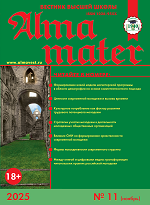УДК 378.147
https://doi.org/10.20339/AM.06-19.065
G.A. Abrosimova is lecturer at sub-faculty of foreign languages for students of natural science direction at Kazan Federal University e-mail: abrosimowagalina@yandex.ru
Analyzed is the problem, connected with the fact, that remarkable part of innovative technologies of training rarely reach realization stage, or does not lead to desirable results. One of origins of the problem is the lack of clear understanding of structure and nature of blended learning. The article proposes the definition of the notion of “blended learning”, and also cleared is the structure of components of blended learning, taking into account university specific character. Presented is the process of bended learning of foreign languages at KFU as a model, every stage of which is representing logical sequence of means, providing development dynamics of the system, simultaneously keeping best traditions, fundamental nature and relevance, improving quality of training in realities of modern educational process.
Key words: training in foreign language, modern technologies, blended learning.
References
1. 10 myths about on-line education. URL: https://ria.ru/sn_edu/20180330/1517602947.html
2. Berezovska, O. Blended learning for foreign language teaching: advatages and disadvantages. Modern Trends and Resources for Teachers of Foreign Languages. 2015. No. 10. P. 5–8.
3. Clark, D. Blended learning. URL: https://ru.scribd.com/document/84278560/Clark-D-Blended-Learning
4. Kudysheva, A., Kudyshev, N. The Model of Blended Learning and It’s Use at Foreign Language Teaching. URL: https://waset.org/publications/3128/the-model-of-blended-learning-and-it...
5. Abrosimova, G.A., Kondratieva, I.G. On-line distant training in language: educational autonomy of students. Vestnik NTsBZhD. 2018. No. 3 (37). P. 5–11.
6. Andreeva, O. Blended learning as one of competitive advantages of universities. URL: http://megaport-nn.ru/content/articles/19161/
7. Desyatova, L.V. Distant education. Moscow, 2010.
8. Johnson, D., Johnson, P., Johnson, E. Methods of education. Education in collaboration. URL: http://www.seinst.ru
9. Kapustin, Yu.I. Pedagogical and organizational conditions of effective combination of internal education and use of technologies of distant learning. Moscow, 2005.
10. Medvedeva, M.S. Formation of readiness of future teachers to work under conditions of blended learning. N. Novgorod, 2015.
11. Mokhova, M.N. Active methods in blended learning in the system of additional pedagogical education. Moscow, 2005.
12. The program of educational plan of IFMandB “Stomatology”. URL: https://kpfu.ru/pdf/portal/oop/266477.pdf
13. FGOS of the 3rd generation (FGOS 3+). URL: https://kpfu.ru/main_page?p_cid=256077&p_random+126











.png)






